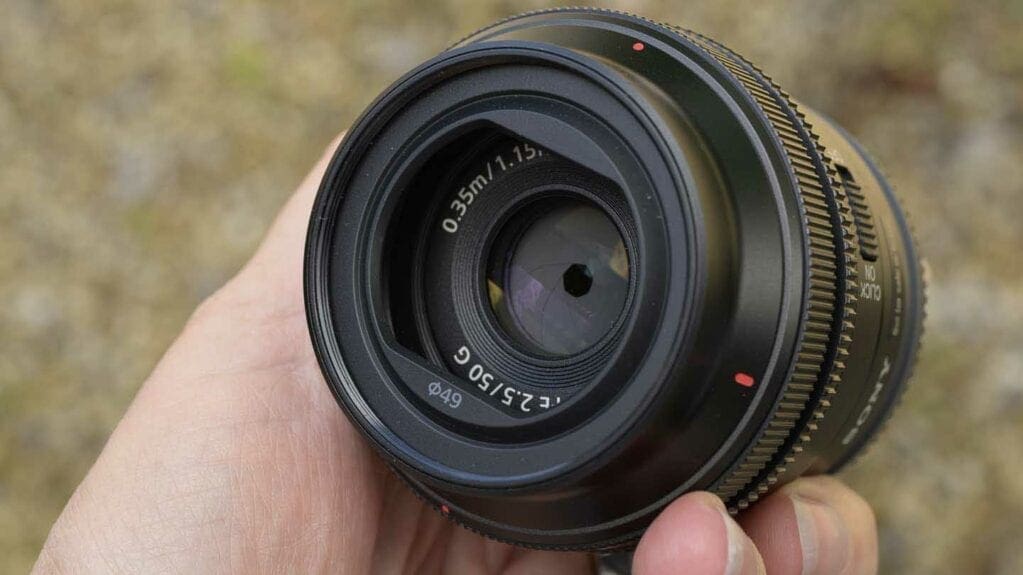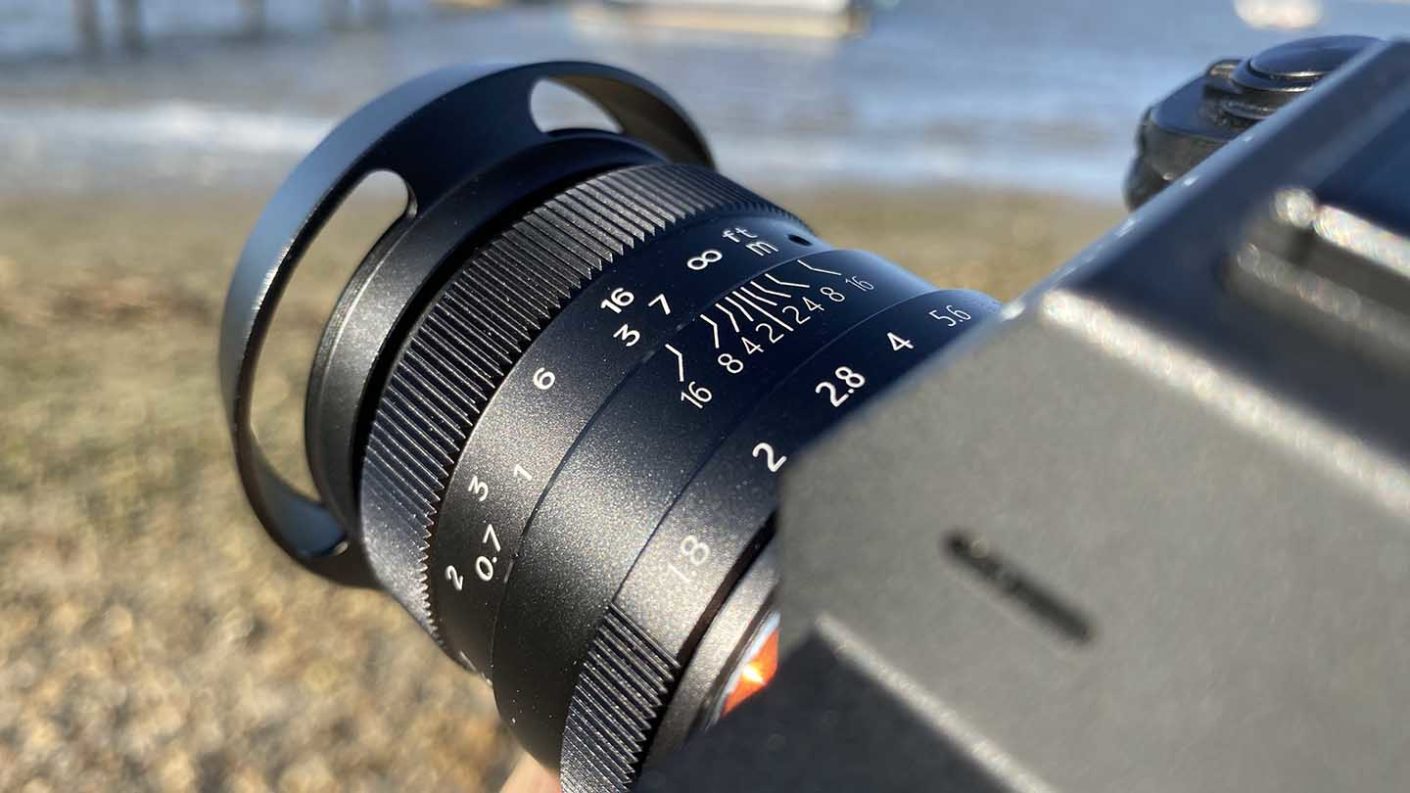Photography isn’t just about having a good eye for a shot or a keen sense of timing. It’s also about understanding your tools, specifically your camera and its lens. Among the various aspects of a lens that a photographer needs to understand, one of the most fundamental is focal length. But what is focal length and how does it affect your photos? Below we answer some of the most frequently asked questions.
In simplest terms, focal length is the distance between your camera’s lens and the image sensor when your subject is in focus. However, its significance extends far beyond this simple definition. It’s the pivotal factor that controls your image’s perspective, depth of field and overall composition. It’s what lets you zoom into a distant bird perched on a tree or capture a sweeping landscape in all its glory.
Identifying the focal length of a lens is easy. You’ll usually find it inscribed on the body of the lens, represented in millimeters (mm). So, you might see numbers like 18mm, 50mm, or 200mm marked on different lenses.
Yet, reading the focal length off the lens is the easy part. Truly understanding what it means for your photography, how it affects your images, and how you can manipulate it to fulfill your creative vision is where the real learning begins. And that’s what we’ll be exploring in this guide. So, whether you’re a novice just starting out, or an experienced photographer looking to refresh your knowledge, read on to learn more about the role of focal length in photography.
- See our in-depth guide to Photography for Beginners for more techniques and jargon-busting
What is the Focal Length of a Camera?
The focal length of a camera is a measure of the distance (usually in millimeters) between the camera’s sensor and the optical center of the lens when the subject of the photo is in focus. It determines the field of view captured by the lens and has a direct impact on the image’s magnification and depth of field.

What is the Focal Length of the Human Eye?
The human eye is often compared to a 50mm lens on a full-frame camera. This is because the standard or “normal” lenses that provide a perspective similar to that of the human eye are usually around 50mm. But it’s important to note that this is a simplification; human vision is much more complex than what can be mimicked by a camera and lens.
- Check out our guide to the best 35mm lenses.
What is the Focal Length of a Lens?
The focal length of a lens is the distance from the lens’s optical center to the image sensor when the subject is in focus. This length is fixed in prime lenses and variable in zoom lenses. Shorter focal lengths provide a wider field of view and less magnification, while longer focal lengths offer a narrower field of view and more magnification.
What Does Focal Length Mean in Photography?
In photography, focal length affects how ‘zoomed in’ your photos appear. The shorter the focal length (e.g., 18 mm), the wider the scene the lens can capture. On the other hand, the longer the focal length (e.g., 200 mm), the more it magnifies the scene, which is useful for focusing on small or distant subjects.
Can Focal Length Be Negative?
In conventional photography and optical systems, focal length is usually positive. However, in complex optical systems or in the realm of physics, you might encounter negative focal lengths, often associated with diverging lenses or mirrors. But for general photography, you’ll almost always be dealing with positive focal lengths.
Does a Lens Adapter Change Focal Length?
A lens adapter does not change the actual focal length of a lens. However, if you use an adapter with optics like a speed booster, it can change the effective focal length and field of view when the lens is used on a different camera body than it was initially designed for.
Does Focal Length Affect Depth of Field?
Yes, focal length does affect the depth of field. A longer focal length will create a shallower depth of field, making the subject of the photo stand out against a blurry background. Conversely, a shorter focal length creates a greater depth of field, keeping more of the scene in focus.
How Does Focal Length Affect an Image?
Focal length affects an image in several ways. It changes the field of view, how ‘zoomed in’ your subject appears, and the depth of field. It can also affect the perception of distances between objects in the photo, known as perspective distortion. Longer focal lengths can compress space, making objects appear closer together, while shorter focal lengths can exaggerate while shorter focal lengths can exaggerate the distance between objects, creating a sense of depth.
How Does Focal Length Affect Field of View?
Field of view refers to the observable area that a person can see through their camera at a particular moment. Shorter focal lengths will give you a wider field of view, allowing you to capture more of the scene in your image. Conversely, longer focal lengths will offer a narrower field of view, allowing you to zoom in on specific details or subjects.
How Does Focal Length Affect Image?
As already mentioned, the focal length influences an image’s field of view, the amount of the scene in focus (depth of field), and the relative distances between objects (perspective). In addition, focal length can also affect the amount of image distortion. Wider angle lenses (short focal length) can cause barrel distortion, where straight lines near the edges of the frame appear curved outward. In contrast, telephoto lenses (long focal length) can cause pincushion distortion, where straight lines seem to bend inward.
How Does Focal Length Affect Magnification?
The focal length of a lens also influences the magnification of an image. Longer focal lengths offer higher magnification, which is why they are often used for close-up shots, wildlife photography, and sports photography where the subject may be far away. Shorter focal lengths offer less magnification, making them ideal for landscape and architectural photography where you want to capture as much of the scene as possible.
In summary, understanding focal length is vital in mastering photography. By manipulating the focal length, photographers can greatly influence the composition, storytelling, and overall visual impact of their images. Remember, there is no “best” focal length; what matters most is choosing the right focal length for your creative vision.




